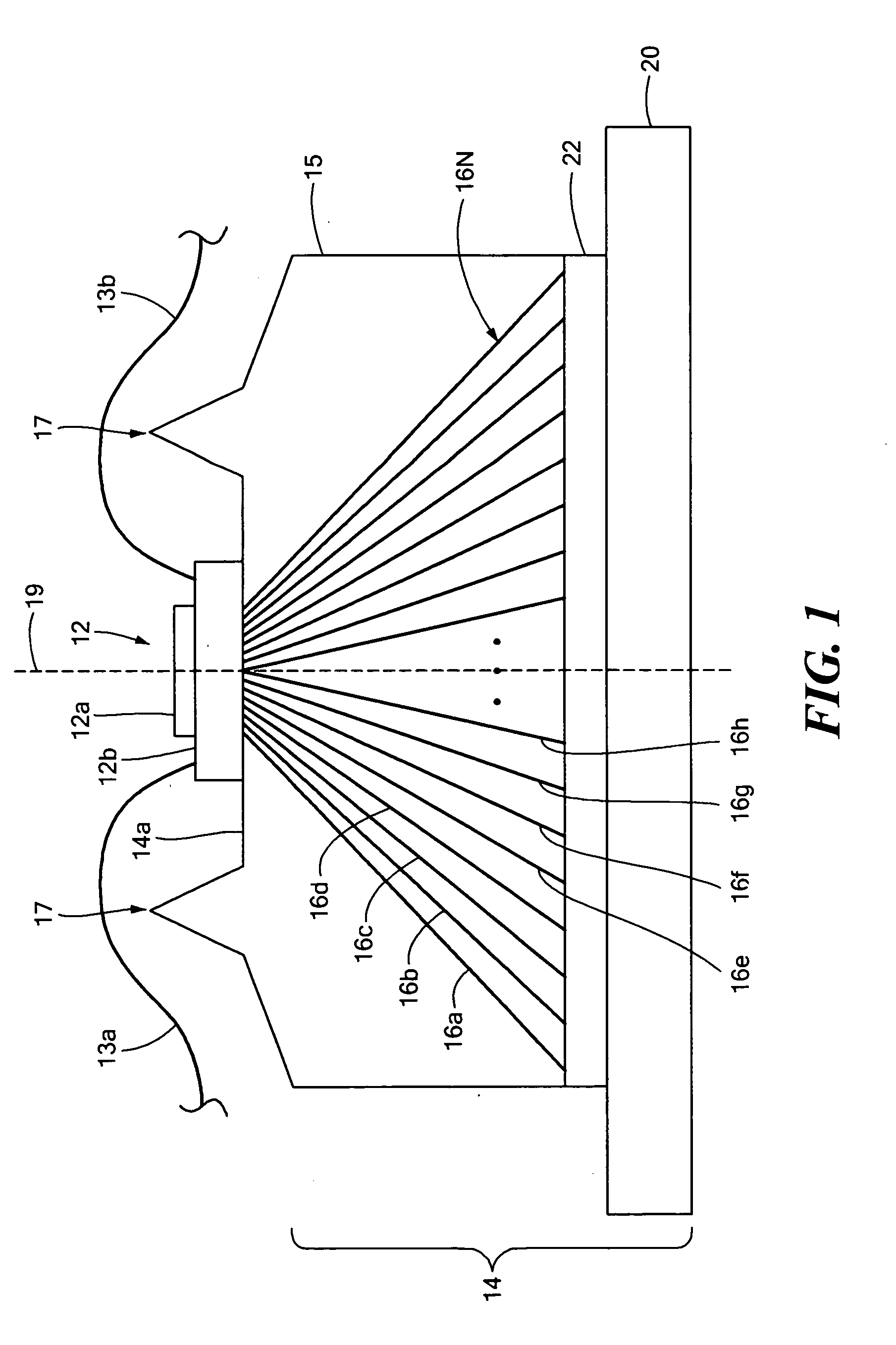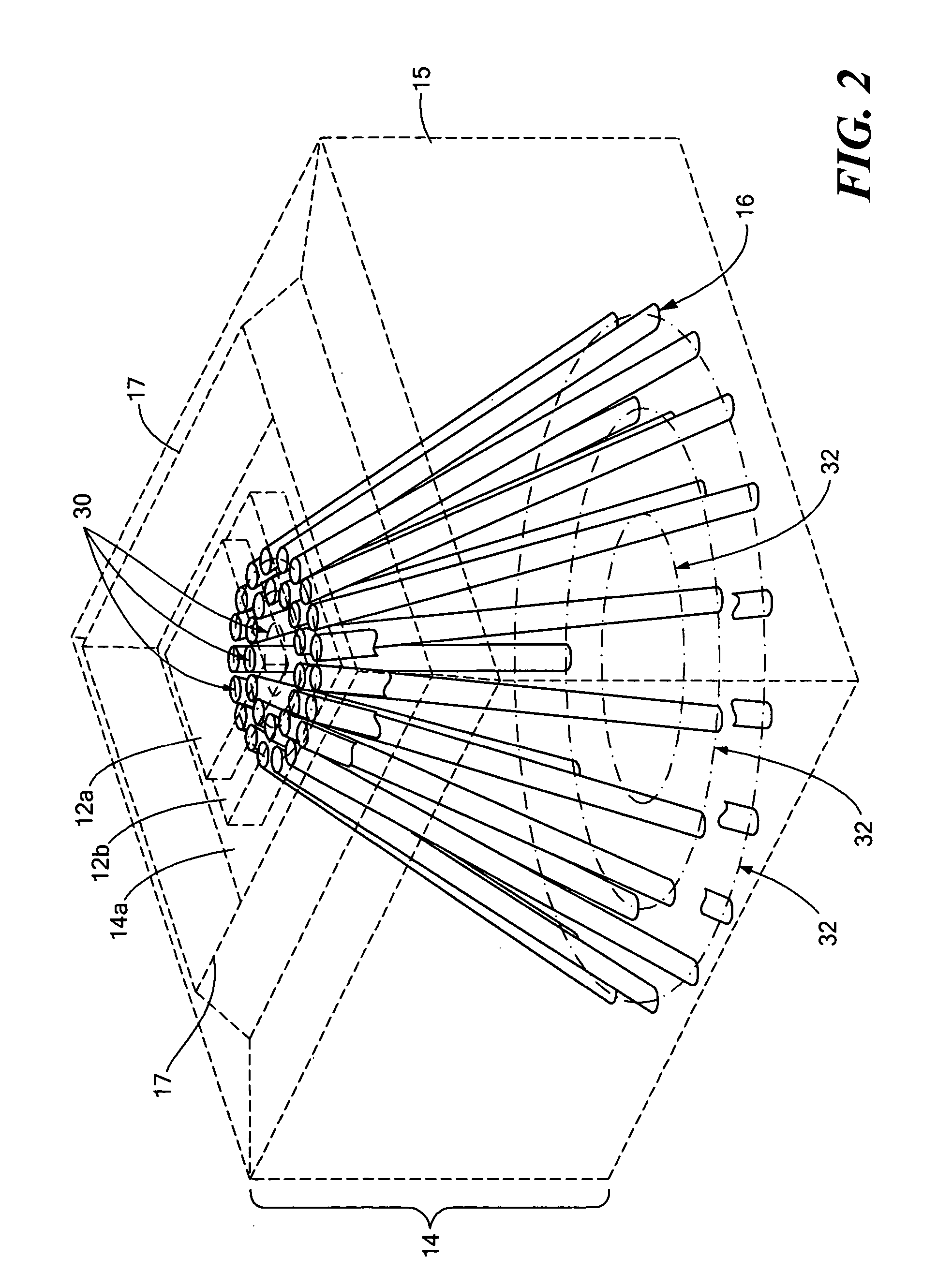Heat sink having directive heat elements
a technology of heat sinks and heat elements, which is applied in the direction of cooling/ventilation/heating modifications, semiconductor devices, semiconductor/solid-state device details, etc., can solve the problems of limiting the amount of power, generating a substantial amount of heat, and limiting the efficiency of heat transfer from the heat generating device (i.e. the led device), so as to reduce the amount of heat generated, and reduce the effect of heat generation
- Summary
- Abstract
- Description
- Claims
- Application Information
AI Technical Summary
Benefits of technology
Problems solved by technology
Method used
Image
Examples
Embodiment Construction
[0012] Referring now to FIGS. 1 and 2 in which like elements are provided having like reference designations, a heat generating device 12, is disposed on a first surface 14a of a heat sink 14 provided from a heat conducting substrate 15 (also referred to herein as a matrix 15) having a plurality of directive heat elements 16 (also referred to herein as heat pipes, fibers, strands or bundles) disposed therein. In this particular embodiment, the heat generating device 12 is shown as two stacked semiconductors 12a, 12b which can form an LED disposed in a recess region (more clearly visible in FIG. 2) defined by walls 17 projecting from a surface of the substrate 15.
[0013] The heat generating device 12 may be thermally coupled to the heatsink 14 via a solder connection (e.g. a semiconductor die soldered to the heat sink 14), epoxy or via any other connection technique or mechanism now known or unknown to those of ordinaru skill in the art. Electrical signal paths 13a, 13b may be used t...
PUM
 Login to View More
Login to View More Abstract
Description
Claims
Application Information
 Login to View More
Login to View More - R&D
- Intellectual Property
- Life Sciences
- Materials
- Tech Scout
- Unparalleled Data Quality
- Higher Quality Content
- 60% Fewer Hallucinations
Browse by: Latest US Patents, China's latest patents, Technical Efficacy Thesaurus, Application Domain, Technology Topic, Popular Technical Reports.
© 2025 PatSnap. All rights reserved.Legal|Privacy policy|Modern Slavery Act Transparency Statement|Sitemap|About US| Contact US: help@patsnap.com



